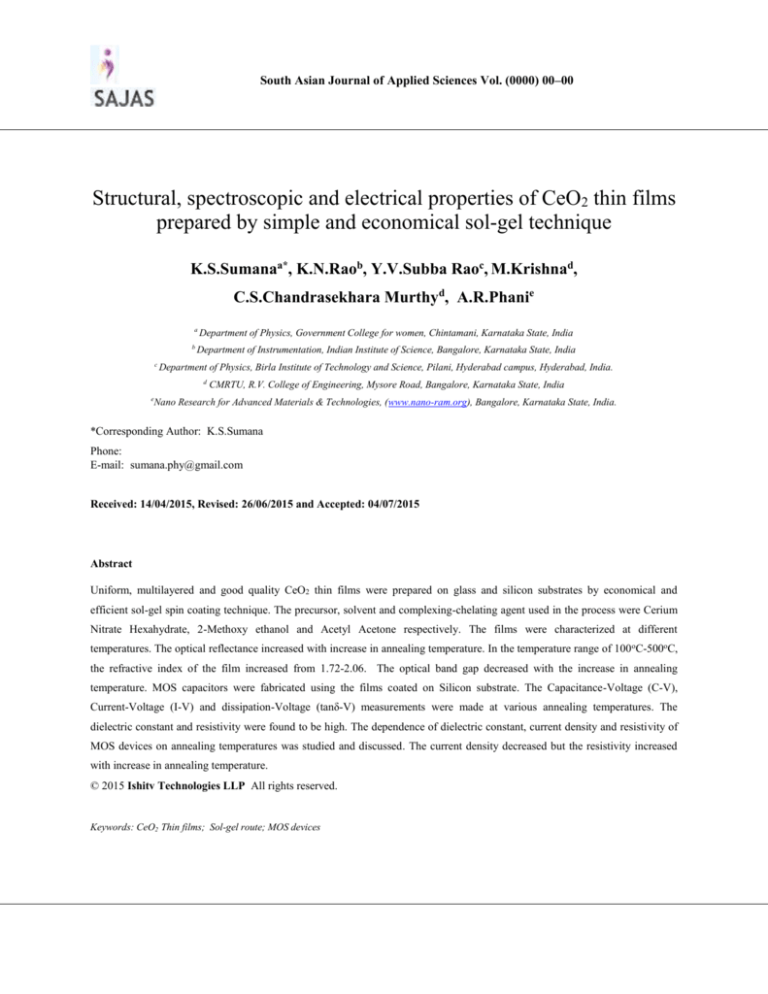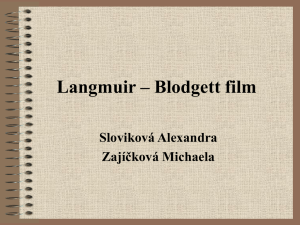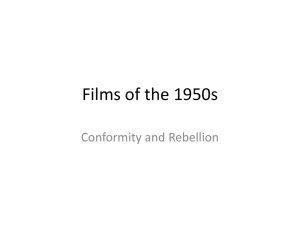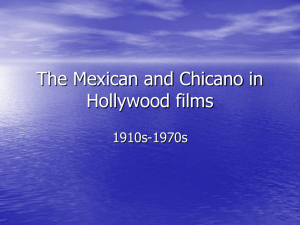
South Asian Journal of Applied Sciences Vol. (0000) 00–00
Structural, spectroscopic and electrical properties of CeO2 thin films
prepared by simple and economical sol-gel technique
K.S.Sumanaa*, K.N.Raob, Y.V.Subba Raoc, M.Krishnad,
C.S.Chandrasekhara Murthyd, A.R.Phanie
a
b
c
Department of Physics, Government College for women, Chintamani, Karnataka State, India
Department of Instrumentation, Indian Institute of Science, Bangalore, Karnataka State, India
Department of Physics, Birla Institute of Technology and Science, Pilani, Hyderabad campus, Hyderabad, India.
d
e
CMRTU, R.V. College of Engineering, Mysore Road, Bangalore, Karnataka State, India
Nano Research for Advanced Materials & Technologies, (www.nano-ram.org), Bangalore, Karnataka State, India.
*Corresponding Author: K.S.Sumana
Phone:
E-mail: sumana.phy@gmail.com
Received: 14/04/2015, Revised: 26/06/2015 and Accepted: 04/07/2015
Abstract
Uniform, multilayered and good quality CeO2 thin films were prepared on glass and silicon substrates by economical and
efficient sol-gel spin coating technique. The precursor, solvent and complexing-chelating agent used in the process were Cerium
Nitrate Hexahydrate, 2-Methoxy ethanol and Acetyl Acetone respectively. The films were characterized at different
temperatures. The optical reflectance increased with increase in annealing temperature. In the temperature range of 100 oC-500oC,
the refractive index of the film increased from 1.72-2.06. The optical band gap decreased with the increase in annealing
temperature. MOS capacitors were fabricated using the films coated on Silicon substrate. The Capacitance-Voltage (C-V),
Current-Voltage (I-V) and dissipation-Voltage (tanδ-V) measurements were made at various annealing temperatures. The
dielectric constant and resistivity were found to be high. The dependence of dielectric constant, current density and resistivity of
MOS devices on annealing temperatures was studied and discussed. The current density decreased but the resistivity increased
with increase in annealing temperature.
© 2015 Ishitv Technologies LLP All rights reserved.
Keywords: CeO2 Thin films; Sol-gel route; MOS devices
South Asian Journal of Applied Sciences Vol. (0000) 00–00
1. Introduction
Ceria is an excellent rare-earth oxide that has displayed potential for various applications like gas sensors
[1], catalyst [2], photocatalyst [3], dye sensitized solar cells [4], electrochromic devices [5], dielectric thin film
material in CMOS [6] and coatings on optical devices [7]. The wide range of applications of CeO 2 is attributed to a
host of its beneficial properties such as wide optical band gap (3-3.6eV), high refractive index (n=2.2-2.3), matching
lattice constant with Si (∆a ˂ 1%), low density of interface states (˂1011cm2eV-1), high dielectric constant (23-52)
and small equivalent oxide thickness (3.8oA) [8-13]. CeO2 is being considered one among the alternative metal
oxides to SiO2 for designing silicon based electronic devices [14].
Numerous techniques are in vogue for preparing CeO 2 thin films. Catalina Mansilla [15] investigated the
structure, microstructure and optical properties of CeO 2 thin films prepared by combined e-beam evaporation and
ion beam assisted deposition technique. It was found that the all films showed cubic structure and the films prepared
by ion assisted deposition technique exhibited higher density, smaller grain size, a high expansion of lattice constant,
higher refractive indices and lower band-gaps. Balakrishnan et al [16] deposited CeO2 thin films on silicon substrate
by pulsed deposition technique and reported cubic structure with a change in preferred orientation from (100) to
(200), an increase in refractive indices and Band gap as the substrate temperature increased. King et al [17] prepared
CeO2 thin films by atomic layer deposition technique using tetrakis Cerium and reported the dependence of structure
and dielectric relaxation behavior of these films on growth temperature. Grosse et al [18] studied the conductivity
and dielectric properties of CeO2 thin films between two gold electrodes on a STO substrate and reported the room
temperature dielectric constant εr to be ~ 26.9.
In thin film preparation, sol-gel method has several distinct merits over other techniques. Possibility of
producing consistent and high quality films, low equipment cost, scope of controlling composition and coating large
curved surfaces and conservation of energy due to room temperature preparation are a few advantages of the sol-gel
technique. Anees A Ansari [19] prepared CeO2 thin films by sol-gel dip coating process using Ammonium Cerium
Nitrate as the precursor. He observed a particle size of 3-4nm for the films annealed at 650oC, direct band gap of
3.23eV and strong PL band at 378nm.
In the present work, we have prepared homogeneous and uniform CeO2 thin films on glass and p-type Si
(100) substrates by sol-gel spin coating technique. MOS capacitors have been fabricated using these films coated on
silicon substrates. The structural, optical, dielectric and electrical properties of these films have been investigated at
different annealing temperatures. The objective of the present paper is to estimate the optical parameters like
reflectance, transmittance, refractive index, optical band-gap of CeO2 thin films in the UV-Visible range and
dielectric parameters like dielectric constant, leakage current density and resistivity of the MOS structures as a
function of temperature.
South Asian Journal of Applied Sciences Vol. (0000) 00–00
2. Experimental technique
Cerium Nitrate Hexahydrate was used as the precursor, 2-Methoxy ethanol as the solvent, Acetyl Acetone
as the complexing and chelating agent. To prepare 0.5M CeO2 sol, stoichiometric amount of Cerium Nitrate
Hexahydrate was taken in a 100ml glass beaker and to this 50 ml of 2-Methoxy ethanol was added. This mixture
was rigorously stirred using a magnetic stirrer. The stirring continued for 30 minutes till the precursor dissolved
completely. To this, Poly Ethylene Glycol (PEG) and Acetyl Acetone was added while stirring. PEG was used to
enhance the viscosity of the sol. The volume ratios of the solvent, PEG and complexing-chelating agent are 60:6:1.
The solution was stirred overnight. The sol obtained was filtered using Whatman filter paper to remove any
particulates that could have formed and subsequently aged for 24 hrs to facilitate the completion of hydrolysis. The
CeO2 sol was then stored in a air tight plastic container.
Special glass was cut into pieces of dimensions of 1.5 cm X 1.5cm using a diamond cutter. These glass
substrates were pre-cleaned with soap solution and water at first. Then they were subjected to subsequent ultrasonication in DI water, acetone and were washed with DI water respectively. Finally they were dried in a hot-air
oven at 70oC for 45 minutes. The cleaned and dried substrates were then placed in the spin coating chamber. A few
drops of 0.5M CeO2 sol was placed on the clean glass substrates using a micropipette. The substrate was then spun
at 2500 rpm for 60 sec. The resulting thin films were pre-heated for 10 minutes at 60oC. The coating and preheating was repeated 5 times to obtain films of sufficient thickness. These films were then annealed at different
temperatures for 1 hr each. At various temperatures, the UV reflectance and transmittance was measured in the
wavelength range 300 nm-1100 nm.
MOS capacitors were prepared using CeO2 thin films deposited on p-Si (100) wafers with a resistivity of 110Ωcm. Prior to the deposition of films, the silicon wafer was cut into regular 1cm X 1cm square pieces. These
silicon pieces were subjected to standard Radio Carporation of America (RCA) cleaning procedure. RCA-1solution
was prepared with NH3, H2O2 and DI water (NH3: H2O2: DI water=1:1:5) and was heated to 75 oC. The cut silicon
pieces were kept in this solution for 15 min while maintaining the temperature at 75oC. Then to remove the native
oxides that could be present on these wafers, these silicon pieces were washed with dilute HF (HF:DI H2O= 1:10).
RCA-2 solution was prepared with HCl, H2O2 and DI water (HCl: H2O2: DI water=1:1:6) and was heated to 75 oC.
The cut silicon wafers were kept in this solution for 15 min to remove metal contamination while maintaining the
temperature at 75oC. Then the wafers were dried at 50oC in an oven. After spin coating and pre-heating the CeO2
films five times on the pre-cleaned silicon substrates, films were annealed at 400oC, 600oC and 800oC for 3 hr
respectively. These films were patterned with top aluminium gate electrodes using shadow mask and aluminium
contact layer on the backside by thermal evaporation.
The structural details of the films were studied using Bruker X-ray Diffractometer (Model: Bruker AXS D8
Advance). The surface morphology of the films was studied using Scanning Electron Microscope (Model: Ultra 55
FESEM). The topography and the surface roughness of the films were ascertained using Atomic Force Microscope
(A.P.E.Research A-100). The thickness of the films was measured using optical profilometer (Model: Zeta
South Asian Journal of Applied Sciences Vol. (0000) 00–00
Instruments Zeta-20). The optical studies of the films were carried out using UV-VIS-NIR spectrophotometer
(Model: HR400, Ocean Optics, USA) that has an accuracy of ±5% both in reflectance and transmittance mode. The
C-V, tanδ-V and I-V characterizations were done using Agilent Impedance Analyzer 4294A and Agilent Device
Analyzer B1500A (Model: SUSS Microtec PM5 Probe station) respectively.
3. Results and Discussion
o
(311)
(220)
(111)
600 C
(200)
(311)
(220)
Intensity (A.U.)
(311)
(220)
o
300 C
(220)
(200)
(111)
(311)
(220)
(200)
o
(311)
b 800 C
400 C
(111)
Intensity (A.U.)
o
o
a 500 C
(111)
(111)
3.1. Structural Properties
o
400 C
o
(311)
(220)
(200)
(111)
(111)
200 C
30
40
50
60
50
60
2 (Degree)
2 (Degree)
Fig.1(a, b): XRD pattern of CeO2 thin films coated on (a) glass substrates and annealed at different temperatures for
30
40
1hr (b) silicon substrates and annealed at different temperatures for 3hr.
The XRD pattern of CeO2 thin films deposited by sol-gel method and annealed at temperatures 200oC500oC for 1 h (deposited on glass substrates) and annealed at temperatures 400 oC-800oC for 3 h each (deposited on
silicon) are shown in Fig.1 (a, b) respectively. From the Fig.1(a) it was observed that the XRD pattern of CeO 2 thin
film annealed at 200oC/1 h has a single low intensity peak at 28.5 o, suggesting the beginning of crystallization.
XRD pattern of CeO2 films annealed at 400oC and 500oC for 1 h each showed small peaks at 2θ= 28.59°, 33.13°,
47.56° and 56.43°. These peaks were indexed as (111), (200), (220) and (311) planes. The peaks for CeO 2 thin films
annealed at 400oC/1 h and 500oC/1 h were slightly sharper and narrower indicating better crystallinity at higher
temperatures. However, the increase in crystallinity with temperature was quite small. The absence of secondary
South Asian Journal of Applied Sciences Vol. (0000) 00–00
peaks was an evidence to the phase purity of the films.
Fig.1 (b) showed well defined diffraction peaks at the very 2θ positions mentioned above. The XRD peak positions
obtained in the present work are in good agreement with JCPDS card # 65-5923 and reports [9, 19], confirming the
cubic fluorite structure of CeO2 films. With the increase in annealing temperature, narrower and sharper peaks were
noticed. The grain size was calculated by using Debye-Scherrer equation,
𝐷=
𝐾λ
− − − − − − − − − − − − − − − − − − − (1)
𝛽𝑐𝑜𝑠𝜃
Where D is the particle size, λ is the wavelength of Cu-Kα radiation, θ is the diffraction angle and β is the full width
at half maximum (FWHM) of XRD peaks. The mean grain sizes in the CeO 2 thin films annealed at 400oC, 600oC
and 800oC for 3 h were 8 nm, 11 nm and 16 nm respectively. It was noticed that with the increase in temperature,
the particle size increased slightly.
3.2. Morphological Properties
Fig. 2 (a-d): SEM images of CeO2 thin films annealed at (a) 400oC/1hr (b)
500oC/1hr (c) 600oC/3hr (d) 800oC/3hr
The surface morphology of CeO2 thin films annealed at 400oC/1hr, 500oC/1hr, 600oC/3hr and 800oC/3hr
are shown in Fig.2 (a-d). The SEM images of the films annealed at 400 oC/1hr and 500oC/1hr showed uniform
structure. The SEM micrographs of the films annealed at 600 oC/3hr and 800oC/3hr showed very slight
crystallization. It was observed that as the annealing temperature increased, fine cracks were developed on the
surface of the film. The number and size of the cracks increased as the annealing temperature increased. Hence the
CeO2 film annealed at 800oC/3hr developed more cracks.
South Asian Journal of Applied Sciences Vol. (0000) 00–00
3.3. AFM studies
The AFM micrographs of CeO2 films conventionally annealed at different temperatures are shown in
Fig.3(a-d). The scan size of these micrographs is 5μm X 5μm). The AFM images revealed very slight crystallization
in the films conventionally annealed at 400oC/1 h and 500oC/1 h. The micrographs of CeO2 films annealed at
600oC/3 h and 800oC/3 h showed closely situated grains with voids in between. The surface roughness of the
conventionally annealed CeO2 films showed a small increase as the annealing temperature increased. The surface
roughness Ra of films annealed at 400oC/1 hr, 500oC/1 hr, 600oC/3 hr and 800oC/3 hr are 0.779 nm, 0.985 nm, 1.26
nm and 1.98 nm respectively.
Fig.3 (a-d): AFM micrographs of CeO2 thin films conventionally annealed at
(a) 400oC/1 hr (b) 500oC/1 hr (c) 600oC/3hr (d) 800oC/3hr
3.4. Optical Properties
From Fig.4 (a) it was observed that conventionally annealed CeO 2 films showed good transmittance in the
visible and NIR regions. The transmittance of the as- prepared CeO2 thin film at a wavelength 600 nm was nearly
87%. It was observed that the transmittance maxima decreased with the increase in annealing temperature. As the
annealing temperature increased to 500oC, the transmittance decreased to approximately 78% at 600 nm. The drop
in the transmittance with the rise in annealing temperature may be due to densification of the films.
South Asian Journal of Applied Sciences Vol. (0000) 00–00
Fig.4 (b) showed that the reflectance of the as-prepared CeO2 thin films was very close to that of bare glass. But it
increased with the increase in annealing temperature after 200 oC. This is due to the improved density of the films.
Also, the reflectance was found to be maximum in the higher wavelength range. The refractive index of the films n f
was calculated was calculated in the wavelength range 350 nm-730 nm from the reflectance spectra using the
formula [20],
𝑛𝑓 = [𝑛𝑜 𝑛𝑠
1+√𝑅𝑚𝑎𝑥
1−√𝑅𝑚𝑎𝑥
1/2
]
----------------------------------------------------------- (2)
Where no and ns denote the refractive indices of the ambient medium and the substrate, R max represents the maximum
reflectance in the reflectance curve. The values of refractive index and the thickness of the as-prepared and the
annealed films have been tabulated in Table.1.
Fig.4 (a) Transmittance spectra (b) Reflectance spectra of CeO2 thin films deposited on glass
and conventionally annealed at various temperatures
South Asian Journal of Applied Sciences Vol. (0000) 00–00
Table.1
Refractive index and thickness of the films determined from the reflectance spectra at various annealing
temperatures.
Annealing temperature
Wavelength (nm)
o
( C)
As prepared
Refractive index of the
Film thickness (nm)
film nf
473.25
1.72
350
o
471.05
1.75
330
o
200 C
373.62
1.97
162
300oC
100 C
333.56
2.03
134
o
722.93
2.04
126
o
722.93
2.05
122
400 C
500 C
The increase in the refractive index of the CeO2 films with the increase in annealing temperature can be attributed
to the change in the microstructure. The decrease in thickness of the films is due to the evaporation of solvent.
The optical band gap of CeO2 thin films have been calculated by Tauc’s method [21] using the relation,
(𝛼ℎ𝜈) 𝑛 = B (ℎ𝜈 − 𝐸𝑔 ) --------------------------------------------------------------(3)
Where α is the absorption coefficient, B is a constant, E g is the optical energy gap and n=2 for direct band gap
transitions. Variation of (αhν)2 as a function of photon energy hν for the as-prepared and annealed CeO2 thin films
is shown in Fig.5. By extrapolating the linear portion of the plot onto the energy axis gives points at which the
absorption coefficient is zero. The optical band gap is obtained from the intercept values on the energy axis. The
optical band gap of the as-prepared film and the films annealed at 300 oC and 500oC are found to be 3.29 eV, 3.04 eV
and 2.69 eV respectively. It was observed that the optical band gap decreased with the increase in annealing
temperature. M.Y.Chen et al [22] have reported the optical band gap of the as-prepared and 900oC annealed CeO2
thin films deposited on saphphire substarte by rf magnetron sputtering to be 2.53 and 2.91eV respectively.
D.Barreca et al [23] reported the refractive index values of 2.79±0.05 at 6328 oA and optical band-gap values of
2.8±0.1 and 2.4±0.1eV for CeO2 thin films by plasma-enhanced CVD technique with and without O2 in the plasma.
B.P.Gorman et al [24] reported refractive index values in the range 1.75-2.3 for CeO2 thin films [24].
South Asian Journal of Applied Sciences Vol. (0000) 00–00
As Prepared
o
300 C
o
500 C
1200
10
800
600
2
-1
(h) X 10 (m eV)
2
1000
400
200
0
1.5
2.0
2.5
3.0
3.5
4.0
4.5
h (eV)
Fig.5. Optical band gap estimation of the as-prepared and annealed CeO2 thin films.
3.5. Dielectric Properties
3.5.1. C-V Characteristics
The MOS capacitors were fabricated using CeO2 thin films. The area of the top electrodes used was 0.2060
-3
X 10 cm2. The C-V characteristics of these devices using CeO2 thin films annealed at 400oC and 600oC at a signal
frequency of 1MHz are shown in Fig.6. The oxide capacitances at 1MHz for films annealed at 400oC and 600oC for
3hr in air ambient are 44.9PF and 101PF for film thicknesses 102 nm and 94 nm respectively. The variation of oxide
capacitances with increase in signal frequency are depicted in Fig.7. A shift in the flat band voltage VFB to a higher
gate voltage at higher frequency could be due to the interface traps [25].
o
400 C
o
600 C
Capacitance (Farad)
1.00E-010
8.00E-011
6.00E-011
4.00E-011
2.00E-011
0.00E+000
-5
-4
-3
-2
-1
0
1
2
3
4
Wavelength (nm)
Fig.6.C-V characteristics of CeO2 thin films annealed at (a) 400oC (b) 600oC for 3hr in air ambient.
South Asian Journal of Applied Sciences Vol. (0000) 00–00
7.00E-011
50kHz
100kHz
1MHz
Capacitance (Farad)
6.00E-011
5.00E-011
4.00E-011
3.00E-011
2.00E-011
1.00E-011
0.00E+000
-5
-4
-3
-2
-1
0
1
2
3
4
5
DC Bias Voltage (Volt)
Fig.7. Frequency dependence of accumulation capacitance of CeO 2 thin films annealed at 800oC for 3hr in air
ambient.
For the CeO2 thin films annealed at 400oC, 600oC and 800oC, the dielectric constants were 25.1, 52.03 and 26
respectively at 1MHz frequency. For the thin film annealed at 600 oC, the value of dielectric constant was found to
be high. This could be attributed to the enhanced crystallization in the film. The decrease in the dielectric constant
for the film annealed at 800oC could be speculated to be because of the fine cracks developed in the film during
crystallization. Jyrki Lappalainen et al [25] reported the dielectric constant for CeO 2 thin film prepared by PLD
technique and deposited on n-type Si substrate to be 23. Logothetidis et al [6] reported a high dielectric constant of
εr ~90 for CeO2 thin films prepared by electron beam evaporation technique at a substrate temperature of 950 oC. Soo
Kiet Chuah et al [26] reported the dielectric constant values of 4.66, 4.23, 3.84 and 3.84 for CeO2 thin films
deposited on silicon substrate by rf magnetron sputtering and post-annealed at 400oC, 600oC, 800oC and 1000oC
respectively. In this report, a decreasing trend is observed for dielectric constant with increase in temperature.
3.3.2. I-V characteristics
The Current-Voltage plots of CeO2 thin films annealed at 400oC, 600oC and 800oC for 3hr in air ambient
are shown in Fig.8 (a,b) respectively. The thicknesses of these films are 102 nm, 94 nm and 88 nm respectively.
Using an electrode area of 0.2060 X 10-3 cm2, the values of current density and resistivity have been estimated at 4V.
For the CeO2 thin films annealed at 400oC, 600oC and 800oC, the calculated values of the current density are 18.05
X 10-4 Acm-2, 7.81 X 10-6 Acm-2 and 1.23 X 10-6 Acm-2 and the values of resistivity are 0.217 X 10 9 Ω cm, 5.49 X
109 Ω cm and 370 X 109 Ω cm respectively. It was observed that the current density has decreased but the resistivity
increased with the increase in annealing temperature.
South Asian Journal of Applied Sciences Vol. (0000) 00–00
Fig. 8 (a,b): I-V characteristics of CeO2 thin films conventionally annealed at (a)
400oC (b) 600oC and 800oC for 3 hr
The variation of loss tangent with bias voltage at 400 oC and 600oC are shown in Fig.9. At a bias voltage of 4V, the
value loss tangent for CeO2 films annealed at 400oC and 600oC were found to be 0.031 and 0.024 respectively. As
the dielectric loss is extremely less, the CeO2 thin films are deemed to be appropriate to use in device fabrication.
0.25
o
400 C
o
600 C
0.20
tan
0.15
0.10
0.05
0.00
4
2
0
-2
-4
Bias Voltage (Volt)
Fig.9. tanδ-V plot of CeO2 films annealed at 400oC and 600oC for 3hr in air ambient.
4. Conclusions
Uniform, stable and high-quality CeO2 thin films were prepared by sol-gel method. The XRD pattern
established cubic fluorite structure of CeO 2. The reflectance and hence the refractive index of the films increased
with increase with annealing temperature. The optical band gap decreased from 3.29eV to 2.69eV when annealing
temperature increased from 70oC to 500oC. MOS capacitors were fabricated using CeO2 thin films annealed at
South Asian Journal of Applied Sciences Vol. (0000) 00–00
various temperatures. The Capacitance-Voltage (C-V), Current-Voltage (I-V) and Loss tangent-Voltage (tanδ-V)
characterizations were studied and dielectric constant, current density and resistivity were calculated. The values of
dielectric constants and the resistivity of the CeO2 films annealed at different temperatures were fairly high, proving
the films to be suitable for MOS capacitor fabrication.
Acknowledgement
The authors are thankful to Mr. N. Srinivas, MRC-APE Research Lab, Materials Research centre, IISc for
providing AFM and Profilometer instrumental facilities.
References
[1].Yixin Liu, Yu Ding, Lichun Zhang, Pu-Xian Gao, Yu Lei, RSC Advances 2 (2012) 5193–5198.
[2].Yu Zhang, Fei Hou, Yiwei Tan, Chem. Commun, 48, (2012) 2391–2393.
[3].Sher Bahadar Khan, M. Faisal, Mohammed M. Rahman, Aslam Jamal Science of the Total Environment 409 (2011) 2987–2992.
[4].Hua Yu, Yang Bai, Xu Zong, Fengqiu Tang, G. Q. Max Lu, Lianzhou Wang, Chem. Commun 48 (2012) 7386–7388.
[5].Y. Li, X. Dong, J. Gao, D. Hei, X. Zhou and H. Zhang, Phys. E 41 ( 2009) 1550–1553.
[6].S. Logothetidis, P. Patsalas, E.K. Evangelou, N. Konofaos, I. Tsiaoussis, N. Frangis, Materials Science and Engineering B 109 (2004) 69-73.
[7].K. Narasimha Rao, L. Shivlingappa, S. Mohan, Materials Science and Engineering B 98 (2003) 38-44.
[8].S. Guo, H. Atwin, S.N. Jacobsen, K.Jarrendahl, U. Helmersson, Journal of Applied physics. 77 (1995)5369-5376.
[9].M.T. Ta, D. Briand, Y. Guhel, J. Bernard, J.C. Pesant, B. Boudart, Thin Solid Films 517 (2008) 450–452.
[10].S. Deshpande, S. Patil, S. V. Kuchibhatla, S. Seal, Applied Physics Letters 87, (2005) 133113:1-3.
[11].F.C. Chiu, S.Y.Chen, C.H.Chen, H.W. Chen, H.S. Huang, H.L.Hwang, Japan. Journal of Applied Physics 48 (2009) 04C014:1-4.
[12].T. Yamamoto, H. Momida, T. Hamada, T. Uda, T. Ohno, Thin Solid Films, 486, (2005) 136-140.
[13].Y. Nishikawa, N.Fukushima, N.Yasuda, K .Nakayama, S .Ikegawa, Japanese Journal of Applied Physics Part l 41 (2002)2480-2483.
[14].Fu-Chien Chiu, Electrochemical and Solid-State Letters, 11 (6) (2008) H135-H137.
[15].Catalina Mansilla, Solid State Sciences 11 (2009) 1456–1464.
[16].G. Balakrishnan , S. Tripura Sundari, P. Kuppusami , P. Chandra Mohan, M.P. Srinivasan, E. Mohandas, V. Ganesan, D. Sastikumar,
Thin Solid Films 519 (2011) 2520–2526.
[17].P.J. King, M. Werner, P.R. Chalker, A.C. Jones, H.C. Aspinall, J. Basca, J.S. Wrench, K. Black, H.O. Davies, P.N. Heys Thin Solid
Films 519 (2011) 4192–4195.
[18].V.Grosse, R Bechstein, F Schmidl, P Seidel, Journal of Physics. D: Applied Physics 40 (2007) 1146–1149.
[19].Anees A. Ansari, Journal of Semiconductors Vol. 31, No. 5 (2010) 053001:1--5.
[20].K. Narasimha Rao, T. S. Radha, M. Ramakrishna Rao, Journal of Indian Institute of Science, Vol. 58, No. 7 (1976) 315 – 29.
[21].B. Elidrissi, M. Addou, M. Regragui, C. Monty, A. Bougrine, A. KachouaneThin Solid Films 379 (2000) 23-27.
[22].M.Y. Chen, X.T. Zu, X. Xiang, H.L. Zhang, Physica B 389 (2007) 263–268.
[23].D. Barreca, G. Bruno, A. Gasparotto, M. Losurdo, E. Tondello, Materials Science and Engineering C 23 (2003) 1013–1016.
[24].B.P. Gorman, V. Petrovsky, H.U. Anderson, T. Petrovsky, Journal of Materials Research 19 (2004) 573-578.
[25]. Jyrki Lappalainen, Darja Kek, Harry L. Tuller, Journal of the European Ceramic Society 24 (2004) 1459–1462.
[26].Soo Kiet Chuah, KuanYew Cheong, Zainovia Lockman, Zainuriah Hassan, Materials Science in Semiconductor Processing 14 (2011)
101– 107.







